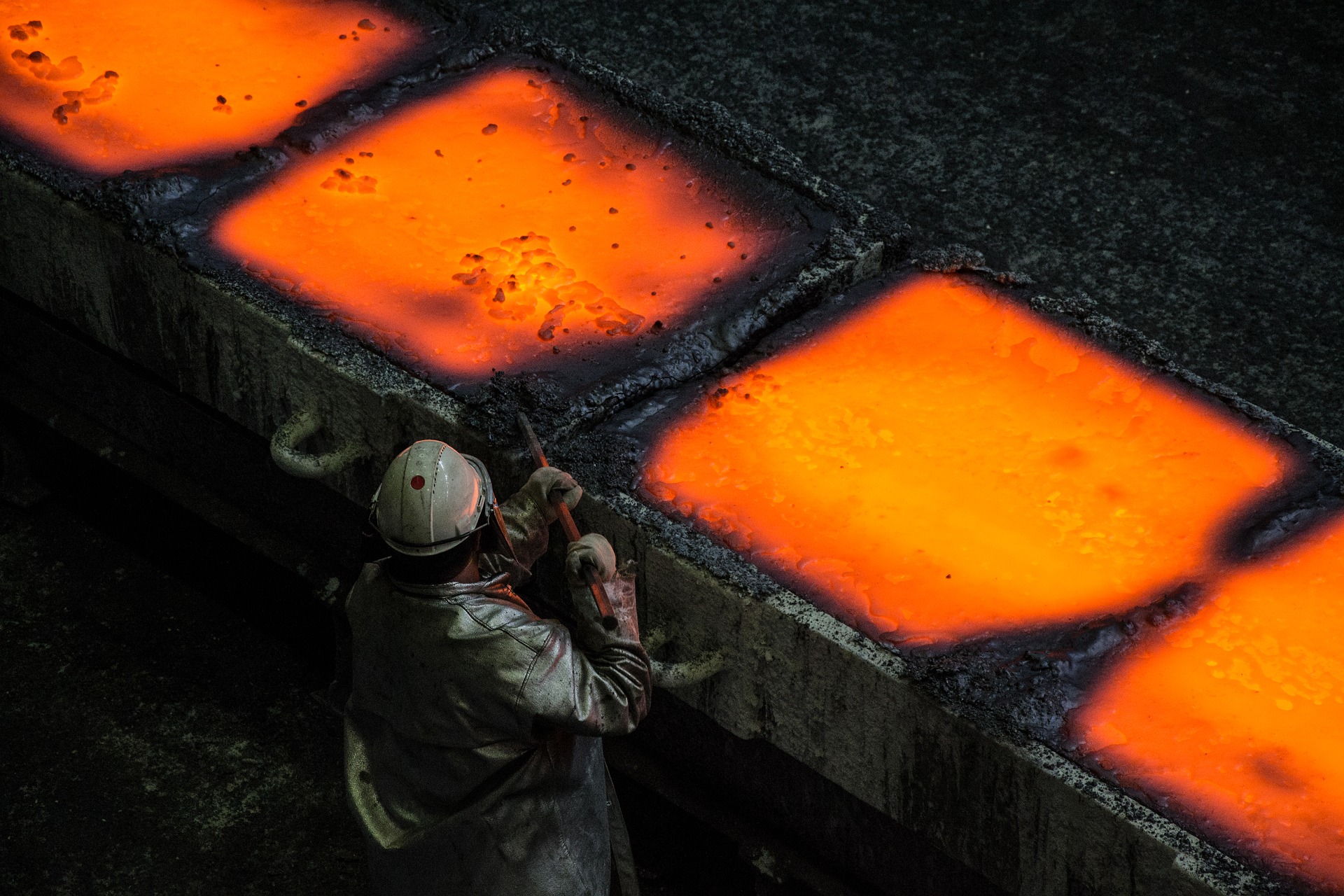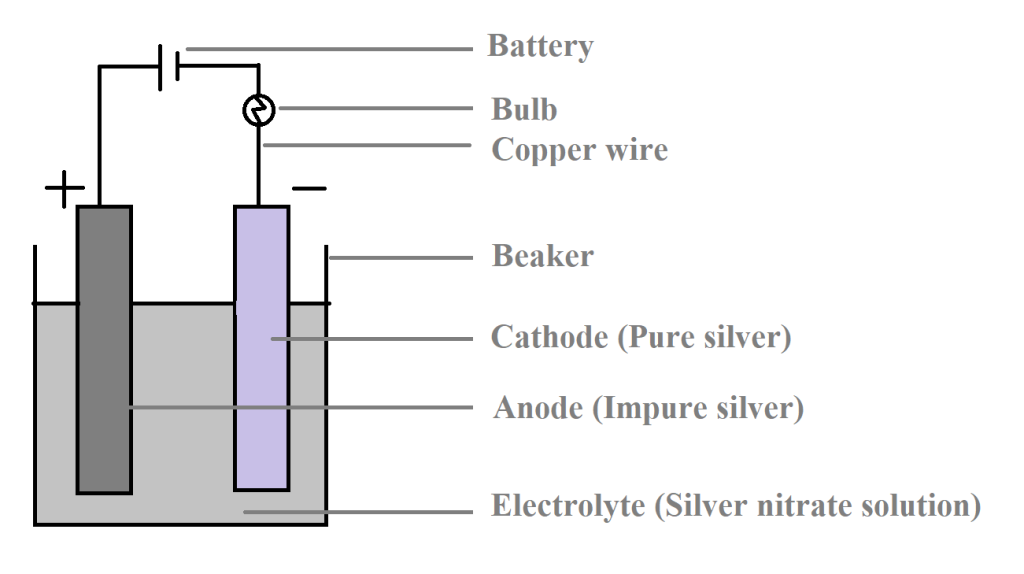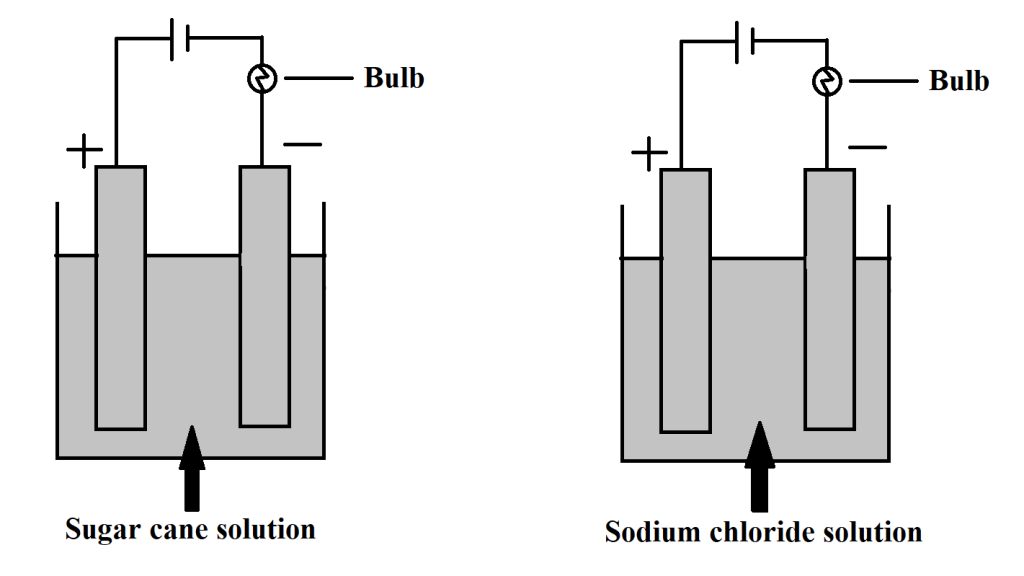
All the earths are burnt metals.
— Ralph Waldo Emerson
Multiple Choice Questions
Q1. The complete equipment used to carry out electrolysis is known as an electrolytic
A. cell.
B. circuit.
C. current.
D. process.
Q2. The chief ore of iron is:
A. Haematite
B. Bauxite
C. Galena
D. Zinc blended
Q3. All the following are the alloys of iron, EXCEPT
A. steel.
B. invar.
C. alnico.
D. gun metal.
Q4. An impure metal is heated in a vessel. The metal forms vapour which condenses in a receiver while the non-volatile impurities are left behind in the vessel. The process described in the statement above is
A. liquation.
B. reduction.
C. distillation.
D. oxidative refining.
Q5. The principle ore of Aluminium is
A. zinc blende.
B. bauxite.
C. haematite.
D. calamine.
Q6. The flow chart given below shows the extraction of iron. What happens in stage ‘X’ below?

A. Smelting
B. Aluminothermy
C. Reducing by heating
D. Electrolytic reduction
Questions
Q1. Fill the blanks.
a) The heating of concentrated ore in a limited supply of air is _____________________.
Ans.: Calcination
b) The heating of ore in the presence of air is called _____________________.
Ans.: Roasting
c) Aluminium is extracted from its ore by _____________________.
Ans.: Electrolysis
d) In froth floatation process, the ore would have ____________________density.
Ans.: low
e) The reducing agent used in pyrometallurgy is _____________________.
Ans.: carbon
Q2. Define electrolyte
Ans.: An electrolyte is a substance which in aqueous solution or in molten state conducts electricity and is decomposed by the passing electrical current. OR
A substance that dissociates into ions in solution and acquires the capacity to conduct electricity.
Q3. Why the size of an anode decreases during the electrorefining of metals?
Ans.: Because anode dissolves into the electrolyte and migrates towards the cathode.
OR
When electric current flows, metal ions from the solution get deposited on cathode and to replace it, metal form the anode dissolve and enters into the solution in the form of ions. So, the size of anode decrease.
Q4. Mention TWO reasons for choosing aluminium over other metals to make cans for beverage drinks.
Ans.:
i) It is light metal (less density)
ii) It doesn’t get rust like iron metal.
Q5. Sarjan was trying to extract metal from its oxide ore. He heated the metal oxide in the presence of carbon. With reference to the extraction of metal, answer the following questions.
a) What happens to the oxide ore when heated with powdered carbon?
Ans.: Oxide ore (or metal oxide) gets reduced to metal.
b) What name is given to this chemical reaction?
Ans.: Roasting
c) Complete the word reaction between metal oxide and carbon.
Metal oxide + Carbon → __A__ + __B ___
Ans.:
A. Metal
B. CO
Q6. You are provided with following materials:
(a beaker, copper wire , battery, a torch bulb, silver nitrate solution, impure silver rod and thin sheet of pure silver to be used as electrodes)
Using the above materials, design a set up to purify the impure silver rod. In your set up label the electrodes used, electrolyte and battery terminals.
Ans.:

Q7. Define redox reaction
Ans.: A chemical reaction which involves simultaneous oxidation and reduction reaction. OR
A redox reaction is a type of chemical reaction that involves the transfer of electrons between two species/atoms.
Q8. Give reason for the following.
a) Ores are converted into oxide ores.
Ans.: It is because it is easier to reduce oxides into metals as compared to carbonates and sulphides.
b) Roasting is the opposite of calcination.
Ans.: Roasting is heating of concentrated ore in excess of air whereas, calcination is heating of concentrated ore in limited/absence of air.
Q9. An experiment was conducted as shown in the figure:
What would happen to the bulbs in set up A and B? Give reasons for the response.

Ans.:
Set up A: Bulb DO NOT GLOW, it is because sugarcane solution is a non-electrolyte.
Set up B: Bulb GLOWS, it is NaCl solution is a strong electrolyte.
Q10. The diagram given below shows the electrolysis of molten sodium chloride. Answer the questions that follow:

a) Name the ions which will migrate to the cathode and anode respectively.
Ans.:
Cathode: Na⁺/ Sodium ion.
Anode: Cl⁻/Chlorine ion.
b) Write the reaction at the cathode and the anode.
Ans.:
| Cathode | Anode |
| Na⁺ + 1e⁻ → Na Gaining of electron | Cl⁻ – 1e⁻ → Cl Losing of electron |
Compiled from BCSE 2017-2021